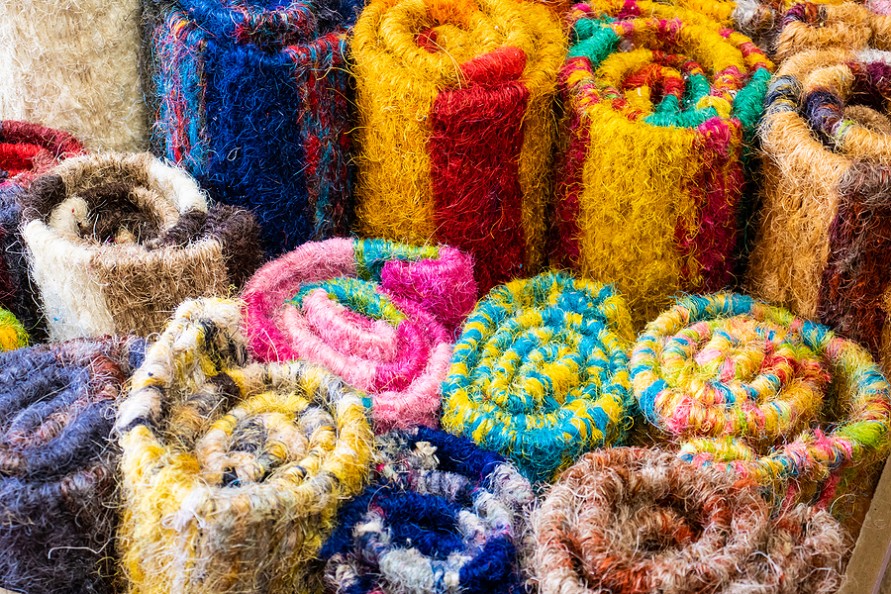Organic materials are currently thriving within the home design sector, becoming a perfect solution for creating relaxing interiors. Whether it’s for your curtains, furniture or rugs, natural fibres put you at ease when it comes to spending time indoors. This is especially true if you look at the ongoing work-from-home scenario.
Natural-fibre rugs have always been Australian’s favourites. Their earthy or organic texture lends an easy vibe to any setting. And their higher-than-average durability makes them one of the most practical choices among environmentally-savvy buyers. But with a wide range of natural fibre types on the market, which one is the right one for your area? Well, that’s what you are going to discover in this guide – how to choose the best rug for your home.
The five most common types of natural-fibre rugs
Natural rugs are prepared from a variety of natural fibres, including sisal, jute and wool. Here is a quick look at the five most common and popular natural fibres rugs that will seamlessly create style, beauty and comfort throughout your home.
-
Cotton rugs
Our first pick is all-natural cotton fibres that are simply impeccable for your interior setting. They are not only soft and lustrous, but they are easy to clean as well. People love the modern blend of European and Persian textile traditions that weaves luminous shades of contemporary interiors. On top of that, cotton rugs are available in a wide range of styles, colours, shapes and textures to complement any home design.
-
Wool rugs
Wool fibres are on the higher end of natural fibres as they are tremendously soft, thick and durable, producing aesthetically pleasing rugs that keep your floor warm during winters and stand up to high-traffic areas. High-quality wool rugs may cost a pretty penny, but believe me, they are worth the investment. They are ideal for adding timeless feel, comfort and sophistication to your hallways, bedrooms and living rooms.
-
Silk rugs
With a sparkling sheen and utmost softness, natural silk fibres bring the best of luxury and quality to the forefront. They are simply perfect if you want to add a regal touch of tranquillity without compromising the beauty of your space. Plus, silk fibres are colourful, thin and attractive and great at reflecting light and giving a real shine.
-
Jute rugs
I’m a huge fan of jute rugs. They are just so damn pocket-friendly, also highly versatile. These rugs come with some perfectly imperfect textures that can attain earthy beauty. The best thing about jute fibres is, they come from the plant’s stalk, not from leaves. Thus, the material is pleasingly soft. In fact, it can almost resemble the softness and warmth of wool rugs. Remember, jute rugs are the least durable of the bunch, making them ideal for low or medium-traffic areas.
-
Sisal rugs
Created from the sisalana or agave plant, sisal fibres are the toughest on the list. They are often used to make ropes in Latin America. They are also coarse, so you may find them ‘not very comfortable’ underfoot, but they are highly recommended for high-traffic areas. Like jute, sisal fibres are available in a wide range of styles or colours because they are easy to dye or knot.
Essential tips to clean your natural fibre rugs
Are you ready to get brand-new modern rug? Now it’s time to learn how to clean and maintain your natural fibre rugs. Here are some essential tips:
-
Shake it off
It is important to clean your natural fibre rug by shaking it out. This is because natural rugs have small pockets where dirt and dust can settle down. The simplest way to get rid of that is by shaking off the rug. So, take your natural rug outside, give it a good shake and keep shaking until all the dirt and debris are gone. Alternatively, you can try hanging larger rugs on a clothes line and then beat them to get rid of the dirt and dust. Make sure you don’t overdo it, especially if there are any loose fibres.
-
Vacuum clean it
Vacuuming your natural fibre rug regularly is essential. Vacuuming helps remove dust, dirt and debris from your rugs. If it’s not possible on a daily basis, vacuum your rug at least twice a week. Vacuum on both sides of the rug, as well as under the rug.
-
Dry clean it with baking soda
Baking soda is an extraordinary dry cleaning agent that can be used to clean and deodorise your natural rug. It is a safe yet effective alternative to harmful chemicals or cleaners. Just pour some generous amount of baking soda onto your rug, gently brush it into its fibres and let the powder sit there for a few minutes before you shake it out. You can also vacuum it, so nothing is left in the fibres.
-
Try spot cleaning it
For cleaning sudden stains and spills, immediately blot the spot and clean it using a tissue, paper towel or cloth. The idea behind spot cleaning is to not let spills sink deeper into your rug and to avoid cleaning the entire piece of rug. If the stain does not vanish away, dip your cloth in some diluted soapy water and gently dab the spot until it fades away. For deep-seated stains, it is best to use a natural fibre rug cleaner, so you don’t have to worry about damaging the fibres.
Final thoughts on natural fibre rugs
There are a number of reasons why natural fibre rugs are a go-to favourite among Aussies. All you have to do is just look at them. Hope you have a clear understanding of how to buy the best rug and how to clean it properly. Stay tuned for more articles coming in the future.

